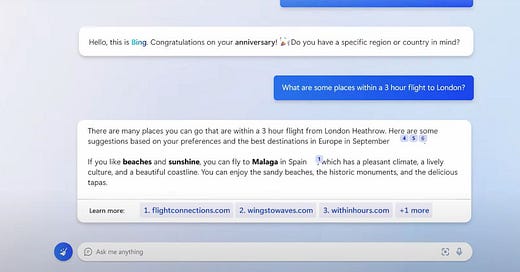Microsoft has updated Bing’s AI chatbot to be less snarky
You can now select between three different Bing AI tones
Microsoft has rolled out a new update to its in-development Bing chatbot to make the AI engine less obnoxious to talk to.
You can now choose between one of three different tones – creative, balanced or precise – which is intended to let you “take more control shaping your preferred chat experience”, according to corporate vice president Yusef Mehdi.
➡️ The Shortcut Skinny: Bing AI
🤖 Microsoft’s Bing AI chatbot has got an update
🗣️ It can now respond to questions in three different ways
😲 You can choose between creative, balanced or precise
🌟 Expect more updates down the line
The options essentially influence how long and meandering the responses will be. Precise, as you’d imagine, generates very brief responses that answer your question but do little to imitate a natural conversation. From Gizmodo’s findings, it seems incapable of producing an opinion on anything, focusing solely instead on supplying concise facts.
Creative mode is more loose-lipped, generating longer responses packed with more information. It also seemingly interprets questions more broadly, supplying information on topics that are related but tangential to your initial query.
The balanced mode, unsurprisingly, is a mixture of the two and the default option.
Bing’s new AI chatbot did the rounds on social media following its debut for giving some users unexpected grief. On several occasions, it refused to answer questions or fell into hallucinations, whereby an AI chatbot confidently repeats incorrect responses.
According to Microsoft’s head of web services Mikahil Parakhin, an update released at the end of February should have reduced the cases where “Bing refuses to reply for no apparent reason” and “reduced instances of hallucination in answers”.
Microsoft recently brought the Bing chatbot to Windows 11 in an update that adds a shortcut for the AI to the taskbar’s search box. It makes accessing the chatbot easier, although doesn’t quite go as far as integrating it directly into the desktop, as you’ll still need to load Edge to use it.
More AI-powered Microsoft tools are likely on the way, as the company made a multi-billion dollar investment in OpenAI earlier this year. Despite Bing’s AI chatbot stumbling out of the gate with a bevy of mistakes, interested users haven’t been put off. Mehdi said over a million people globally have joined the preview.




